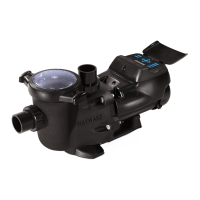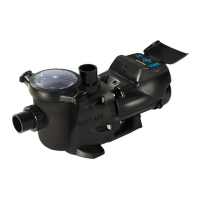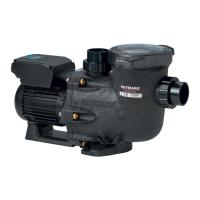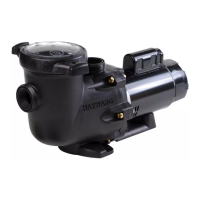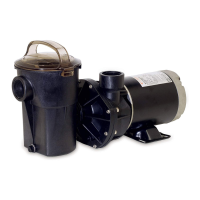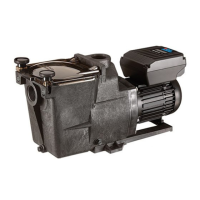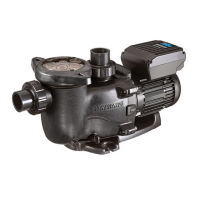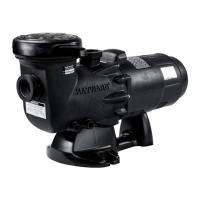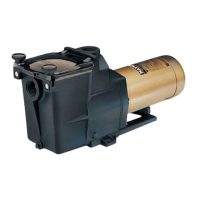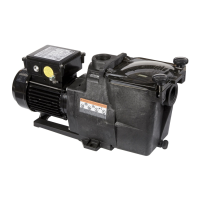USE ONLY HAYWARD GENUINE REPLACEMENT PARTS
7
Installation
Pump Location
Locate pump as close to the pool as possible, in compliance with local codes. To reduce friction loss, suction lines should as direct as they can be. Suction lines
should have continuous slope upward from lowest point in line. Joints must be tight (but not over-tightened). Suction line diameter must equal or be larger
than the discharge line diameter.
Though the pump is designed for outdoor use, it is advised to place pump and filter in the shade to shield them from
continuous direct heat. Select a well-drained area that will not flood when it rains. Do NOT install pump and filter in a
damp or non-ventilated location. Keep motor clean. Pump motors require free circulation of air for cooling.
Pump Mounting
Install pump on a level concrete slab or other rigid base to meet all local and national codes. Secure pump to base with screws or bolts to further reduce vibra-
tion and stress on pipe or hose joints. The base must be level, rigid, and vibration free.
Pump mount must:
• Allow pump inlet height to be as close to water level as possible.
• Allow use of short, direct suction pipe (to reduce friction losses).
• Allow for valves in suction and discharge piping.
• Be protected from excess moisture and flooding.
• Allow adequate access for servicing pump and piping.
Pipe Sizing Chart
Note: It is recommended that a minimum length of straight piping (shown as “L” in above diagram), equivalent to 5 pipe size diameters, be used between the
pump suction inlet and any plumbing fittings (elbows, valves, etc.).
When installing the VS Omni pump, care should be taken to ensure proper pipe and equipment sizing to handle the maximum flow required. It is recommended
to set the maximum speed in order to not exceed the maximum flow rate. After installation is complete, set maximum speed during configuration of the VSP. For
more information, refer to the Configuration section in the VS Omni Installation manual.
WARNING – Hazardous Pressure. Pumps, filters, and other equipment/ components of a swimming pool filtration system operate under pressure. Incorrectly
installed and/or improperly tested filtration equipment and/or components may fail resulting in severe personal injury or death.
Plumbing
1. Use PTFE tape to seal threaded connections on molded plastic components. All plastic fittings must be new or thoroughly cleaned before use. Do NOT
use Plumber’s Pipe Dope as it may cause cracking of the plastic components. When applying PTFE tape to plastic threads, wrap the entire threaded por-
tion of the male fitting with one to two layers of tape. Wind the tape clockwise as you face the open end of the fitting, beginning at the end of the fitting.
The pump suction and outlet ports have molded-in thread stops. Do NOT attempt to force hose connector fitting past this stop. It is only necessary to
tighten fittings enough to prevent leakage. Tighten fitting by hand and then use a tool to engage fitting an additional 1 ½ turns. Use care when using
PTFE tape as friction is reduced considerably; do NOT over-tighten fitting or you may cause damage. If leaks occur, remove connector, clean off old PTFE
tape, re-wrap with one to two additional layers of PTFE tape, and re-install connector.
2. Fittings (elbows, tees, valves, etc.) restrict flow. For better efficiency, use the fewest possible fittings. Avoid fittings that could cause an air trap. Pool
and spa fittings MUST conform to the International Association of Plumbing and Mechanical Officials (IAPMO) standards.
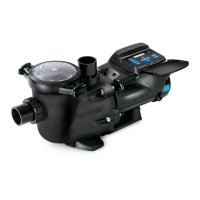
